| ________________
CM . . .
. Volume XXIII Number 24. . . .March 3, 2017

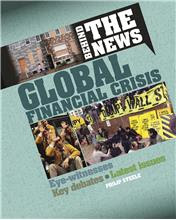 |
Global Financial Crisis. (Behind the News).
Philip Steele.
St. Catharines, ON: Crabtree, 2016.
48 pp., pbk., hc. & html, $10.95 (pbk.), $29.36 (List RLB), $23.49 (School RLB).
ISBN 978-0-7787-2591-6 (pbk.), ISBN 978-0-7787-2586-2 (RLB), ISBN 978-1-4271-1768-7 (html).
Subject Headings:
Global Financial Crisis, 2008-2009-Juvenile literature.
Financial crisis-Juvenile literature.
Recessions-Juvenile literature.
Economic history-21st century-Juvenile literature.
Grades 7-10 / Ages 12-15.
Review by Suzanne Pierson.
**** /4
|
| |
|
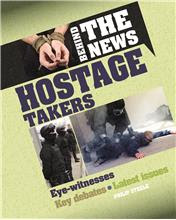 |
Hostage Takers. (Behind the News).
Philip Steele.
St. Catharines, ON: Crabtree, 2016.
48 pp., pbk., hc. & html, $10.95 (pbk.), $29.36 (List RLB), $23.49 (School RLB).
ISBN 978-0-7787-2592-3 (pbk.), ISBN 978-0-7787-2587-9 (RLB), ISBN 978-1-4271-1769-4 (html).
Subject Headings:
Political kidnapping-Juvenile literature.
Hostage negotiations-Juvenile literature.
Terrorism-Juvenile literature.
Grades 7-10 / Ages 12-15.
Review by Suzanne Pierson.
**** /4
|
| |
|
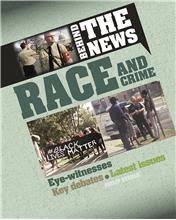 |
Race and Crime. (Behind the News).
Philip Steele.
St. Catharines, ON: Crabtree, 2016.
48 pp., pbk., hc. & html, $10.95 (pbk.), $29.36 (List RLB), $23.49 (School RLB).
ISBN 978-0-7787-2593-0 (pbk.), ISBN 978-0-7787-2588-6 (RLB), ISBN 978-1-4271-1770-0 (html).
Subject Headings:
Minorities, Crimes against-Juvenile literature.
Crime and race-Juvenile literature.
Violent crimes-Juvenile literature.
Prejudices-Juvenile literature.
Racism-Juvenile literature.
Grades 7-10 / Ages 12-15.
Review by Suzanne Pierson.
**** /4
|
| |
|
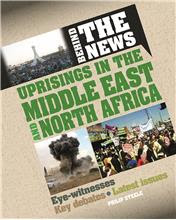 |
Uprisings in the Middle East and North Africa. (Behind the News).
Philip Steele.
St. Catharines, ON: Crabtree, 2016.
48 pp., pbk., hc. & html, $10.95 (pbk.), $29.36 (List RLB), $23.49 (School RLB).
ISBN 978-0-7787-2594-7 (pbk.), ISBN 978-0-7787-2589-3 (RLB), ISBN 978-1-4271-1771-7 (html).
Subject Headings:
Revolutions-Middle East-History-21st century-Juvenile literature.
Middle East-History-1979- -Juvenile literature.
Middle East-Politics-History-1979- -Juvenile literature.
Arab Spring, 2010-Juvenile literature.
Grades 7-10 / Ages 12-15.
Review by Suzanne Pierson.
**** /4
|
| |
|
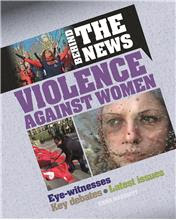 |
Violence Against Women. (Behind the News).
Emma Marriott.
St. Catharines, ON: Crabtree, 2016.
48 pp., pbk., hc. & html, $10.95 (pbk.), $29.36 (List RLB), $23.49 (School RLB).
ISBN 978-0-7787-2595-4 (pbk.), ISBN 978-0-7787-2590-9 (RLB), ISBN 978-1-4271-1772-4 (html).
Subject Headings:
Women, Crimes against-Juvenile literature.
Abused women-Juvenile literature.
Violent crimes-Juvenile literature.
Grades 7-10 / Ages 12-15.
Review by Suzanne Pierson.
**** /4
|
| |
|

excerpt:
Tunnel-vision TV
The views of people in power, such as senior police officers, judges, and politicians, influence what is shown in the media about a crime because they control or create the information made available to the public. This often limits what media sources are able to cover. It also often excludes the voices of people who are disempowered, such as the victims of crime. This limited reporting can encourage stereotyping, as well as xenophobia, which is the fear or hatred of people from other countries. For example, news from Africa or Asia tends to focus on famine, natural disasters, war, or terrorism – not the many positive stories about their everyday lives and cultures. This helps build an impression that people living there are always at risk or involved in crime, and are not contributing members of their societies. (From Race and Crime: Behind the News.)
There is so much to like about the series, “Behind the News”. The topics of the five books in the series are current, important, and engaging. In this current climate when we are now debating what is news and what is fake news, these books are extremely relevant. I highly recommend the series, with two caveats.
First, the things I really like. The information in each book is on a current topic. Many of the students sitting in classrooms today will have witnessed, either through the media or their own experiences, many of the events that are used as examples in the books. Using and developing skills in media literacy, critical thinking, and critical literacy through the lens of international news headlines is sure to engage students as they examine world issues from differing perspectives.
The photos are often dramatic. Case studies, primary source material, and open-ended questions encourage readers to dig deeper into the news stories. Each book includes several debate topics that provide the opportunity to look at these complicated issues from at least two points of view.
Each of the books presents the topic from an international perspective. Except for “Uprisings in the Middle East and North Africa”, each of the other books in the series includes some references to Canada.
As I mentioned earlier, I highly recommend this series, but, if you purchase any of these books, you need to be aware of two considerations.
First, the topics and the examples used in each of the books are mature. For example, in “Violence Against Women”, rape is the topic of several chapters: “Weapons of war”, “Mass rape of Congolese women”, “The effects of rape”, “Gang rape in Delhi”, “Combating rape culture”. Although the material has probably all been viewed on main stream television or the internet, you will want to consider the age of your students before you purchase these books.
Second, without thoughtful guidance from a teacher, the material in these books could contribute to entrenching intolerance, instead of promoting respect for all. For example, in “Uprisings in the Middle East and North Africa”, one debate topic is “Is violence needed to achieve change through political protest?” “YES: Even non-violent demonstrations often end in violence. When protesting against a brutal, oppressive regime, violence is necessary to combat violence and make real change happen.” “NO: Violence does not make a country a better place to live. It only causes more problems and hurts innocent people. Only the moral force of non-violence can bring fundamental and lasting peace.”
Although the intent of the books is to encourage students to question and think critically, it is possible that students assigned to each side of a debate topic will become invested in the point of view that they are defending. Students need to receive instruction not just about how to debate to win, but also about how to analyze which arguments were supported by facts and which were just opinions or ‘alternate truths’. It would not be wise to assume that all students are mature enough and unbiased enough to read the material critically and think critically about the ideas presented.
Global Financial Crisis looks at economic theories through modern history and examines the causes and effects of the current economic climate. Questions are raised about the effects of globalization, and the effects of growing income inequality. Although Canada is not one of the largest players in the global finances, our role as a neighbour and key trading partner of the United States is discussed in terms of the financial crisis of 2008 and the future.
Hostage Takers examines not only political hostage takings and the moral dilemma of paying or not paying ransoms, but it also looks at the ethics of the involvement of media in hostage takings. The Code of Ethics of The Association of Electronic Journalists of Canada is quoted:
Reporting on criminal activities such as hostage-takings, prison uprisings or terrorist acts will be done in a fashion that does not knowingly endanger lives, offer comfort and support or provide vital information to the perpetrator(s).
Race and Crime looks at racism around the world, including a chapter on the Missing and Murdered Indigenous Women in Canada. The role of the media, and of the justice system, as well as socio-economic factors are examined. Despite the depressing statistics, the book manages to end on a positive note with the example of Nelson Mandela.
Mandela broke the law to take on South Africa’s apartheid government, and served 27 years in jail. In the end, he defeated institutional racism with a vision of equality, education, and economic justice for all.
Uprisings in the Middle East and North Africa tries to make sense of recent events in Tunisia, Egypt, Libya, Saudi Arabia, Syria and other hot spots. Questions examine dictatorship and democracy, faith and the state, the role of the Internet in the Arab Spring, and human rights. Although the Middle East and North Africa continue to be in a state of political unrest, including war, this book provides a good background to events as they unfold in current events.
Violence Against Women begins with the premise that physical, sexual and psychological violence against women is a violation of human rights. Topics include trafficking of women into prostitution, forced marriage, rape culture, missing women in Mexico, as well as the inquiry into the missing and murdered indigenous women in Canada. The role of media as a force for good, such as the #BringBackOurGirls effort in 2014, and as a destructive force in advertising, entertainment, and the Internet, are both examined. The sensationalizing of some incidents of violence against women while downplaying domestic violence is also an aspect of the role media plays. The book ends with a look at ways to challenge violence against women. The final chapter is “Taking Action To End Violence” and ends with a quotation from UN Secretary-General Ban Ki-moon: “Violence against women is always a violation of human rights; it is always a crime; and it is always unacceptable. Let us take this issue with the deadly seriousness that it deserves.”
The glossary of The Ontario Curriculum, Grades 1-8: Language, 2006 (revised) defines Critical Literacy as
"The capacity for a particular type of critical thinking that involves looking beyond the literal meaning of texts to observe what is present and what is missing, in order to analyse and evaluate the text’s complete meaning and the author’s intent. Critical literacy goes beyond conventional critical thinking in focusing on issues related to fairness, equity, and social justice. Critically literate students adopt a critical stance, asking what view of the world the text advances and whether they find this view acceptable."
In the hands of thoughtful, caring educators, these books are excellent resources. They can be used to support many objectives of several curricula: media literacy, global education, language, critical thinking, and others. Used carelessly these books may entrench already held biases or possibly promote intolerance and disrespect. This is an outstanding series but user beware.
Highly Recommended.
Suzanne Pierson, a retired teacher-librarian, is currently instructing Librarianship courses at Queen’s University in Kingston, ON.

To comment
on this title or this review, send mail to cm@umanitoba.ca.
Copyright © the Manitoba Library Association. Reproduction for personal
use is permitted only if this copyright notice is maintained. Any
other reproduction is prohibited without permission.
Next Review | Table of Contents For This Issue - March 3, 2017
CM Home | Back Issues
| Search
| CM Archive
| Profiles Archive
|




